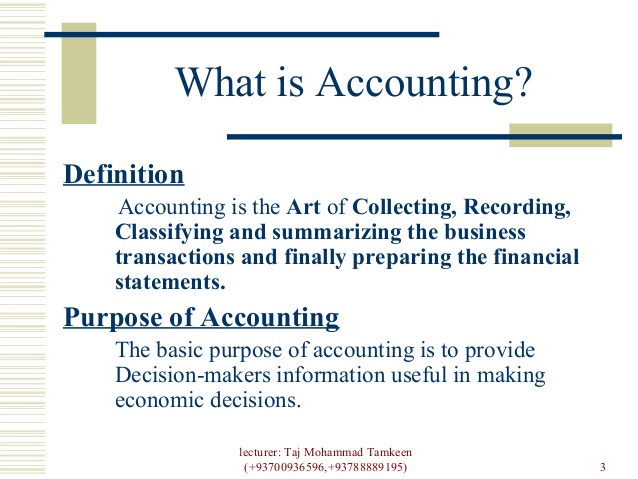Bookkeeping Agost 29, 2022
Costing Terminology
In most cases, these costs are fixed and do not change from month to month. As a result, they need to be taken into account when creating a budget or financial plan. Rent can be a period cost or a product cost depending on what the rented building is used for. If the rented building is used as a manufacturing facility, it is a product cost. If the rented building is used as office space, it is a period cost.
These costs include the costs of direct materials, direct labor, and manufacturing overhead. They will not be expensed until the finished good are sold and appear on the income statement as cost of goods sold. Period costs are closely related to periods of time rather than units of products. For this reason, businesses expense period costs in the period in which they are incurred.
Items that are not period costs are those costs included in prepaid expenses, such as prepaid rent. Also, costs included in inventory, such as direct labor, direct materials, and manufacturing overhead, are not classified as period costs. Finally, costs included in fixed assets, such as purchased assets and capitalized interest, are not considered to be period costs. Product costs (direct materials, direct labor and overhead) are not expensed until the item is sold when the product costs are recorded as cost of goods sold.
Self-Employed Tax Concerns: How Far Back Can the IRS Audit a Business?
If you’re using the wrong credit or debit card, it could be costing you serious money. Our experts love this top pick, which features a 0% intro APR for 15 months, an insane cash back rate of up to 5%, and all somehow for no annual fee. The person creating the production cost calculation, therefore, has to decide whether these costs are already accounted for or if they must be a part of the overall calculation of production costs. A financial professional will offer guidance based on the information provided and offer a no-obligation call to better understand your situation.
There is little difference between a retailer and a manufacturer in this regard, except that the manufacturer is acquiring its inventory via a series of expenditures (for material, labor, etc.). What is important to note about these product costs is that they attach to inventory and are thus said to be inventoriable costs. When you differentiate period costs from others, you’re breaking down your expenses to provide insights about where your money is going. From there, you can make decisions that will make your business more profitable.
Product and Period Costs in Financial Statements
We follow strict ethical journalism practices, which includes presenting unbiased information and citing reliable, attributed resources. This team of experts helps Finance Strategists maintain the highest level of accuracy and professionalism possible. At Finance Strategists, we partner with financial experts to ensure the accuracy of our financial content.
- For example, the cost of raw materials that a company purchases will be a period cost, as it will vary with the level of production.
- (You may also see other names for manufacturing overhead, such as factory overhead, factory indirect costs, or factory burden).
- These are generally costs incurred in the process of delivering the good or value proposition, but are not directly related to production.
- Product costs include the costs to manufacture products or to purchase products.
Administrative costs may include expenditures for a company’s accounting department, human resources department, and the president’s office. Selling and administrative expenses may also include utilities, insurance, property taxes, depreciation, supplies, maintenance, salaries, etc. that are incurred in a business but outside of the factory production area. Period costs are also known as period expenses, time costs, capacity costs, and operating expenses. In order to keep your budget efficient, it is important to know how to report period costs, but unfortunately, there is no standard formula for calculating period costs. The standard costs that a business incurs that are not directly related to production operations or inventory costs but still must be added to their income statement are known as period costs. Period costs include any costs not related to the manufacture or acquisition of your product.
Save time and money
Manufacturing overhead costs are manufacturing costs that must be incurred but that cannot or will not be traced directly to specific units produced. In addition to indirect materials and indirect labor, manufacturing overhead includes depreciation and maintenance on machines and factory utility costs. Period costs include selling expenses and administrative expenses that are unrelated to the production process in a manufacturing business. Selling expenses are incurred to market products and deliver them to customers. Administrative expenses are required to provide support services not directly related to manufacturing or selling activities.
The formula for period costs is simply adding up all costs that are classified as period costs. To illustrate, assume a company pays its sales manager a fixed salary. The expenses that are compiled for the calculation of Period costs are not related Other expenses will not be considered as a period cost because they are directly related to the process of production of inventory.

Indirect materials are part of overhead, which we will discuss below. There is no specific method or formula for calculation of period costs. For calculating the period costs the management could track the records of period costs and identify those costs which are charged in the statement of profit & loss and are not directly related to production of inventories. This way the management could identify the expenses that could be classified as period costs and it will become easy to evaluate and compare the same figure with the figure in the previous years. Period costs are not assigned to one particular product or the cost of inventory like product costs. Therefore, period costs are listed as an expense in the accounting period in which they occurred.
Selling expenses are costs incurred to obtain customer orders and get the finished product in the customers’ possession. Advertising, market research, sales salaries and commissions, and delivery and storage of finished goods are selling costs. The costs of delivery and storage of finished goods are selling costs because they are incurred after production has been completed.
Ways to Reduce or Eliminate These Types of Costs
During the fourth quarter of 2016, Company XYZ expected to pay $150,000 in rent and utilities and $100,000 in insurance and property taxes. Knowing how much money a business spends on periods of expenses helps its owners and managers understand where their cash flows from operations come from and where they go when operations end up with cash deficits. Period expenses are costs that help a business or other entity generate revenue, but aren’t part of the cost of goods sold.
Dialysis Costs for a Health System Participating in Value-Based Care – AJMC.com Managed Markets Network
Dialysis Costs for a Health System Participating in Value-Based Care.
Posted: Tue, 22 Aug 2023 19:08:31 GMT [source]
Your business’s recurring expenses, aside from inventories and production expenses, are periodic. The articles and research support materials available on this site are educational and are not intended to be investment or tax advice. All such information is provided solely for convenience purposes only and all users thereof should be guided accordingly. In the wake of the COVID-19 pandemic and escalating tensions with China, American companies are actively seeking alternatives to mitigate their supply chain risks and reduce dependence on Chinese manufacturing. Nearshoring, the process of relocating operations closer to home, has emerged as an explosive opportunity for American and Mexican companies to collaborate like never before. Instead, you depreciate them over their useful life, expensing a portion of your purchase each year.
Period Cost Examples
In sum, product costs are inventoried on the balance sheet before being expensed on the income statement. Looking at these expenses the utilities for the manufacturing facility and the production worker’s wages are both product costs because these are manufacturing overhead costs and direct labor costs. Utilities for the retail shop as well as the cashier’s wages are period costs. If you manufacture a product, these costs would include direct materials and labor along with manufacturing overhead. Most of the components of a manufactured item will be raw materials that, when received, are recorded as inventory on the balance sheet.
Zoom Video Communications Reports Financial Results for the … – Zoom Investor Relations
Zoom Video Communications Reports Financial Results for the ….
Posted: Mon, 21 Aug 2023 20:06:44 GMT [source]
Rent expense for the manufacturing facility is not a period cost since it is related to product manufacturing. However, rent expense for the office is since production does not take place in the office. The manufacturing facility manager’s salary is not a period expense since it is considered a manufacturing overhead cost. On the other hand, the administrative assistant’s salary is a period cost since she works in the office and not on the production floor. Finally, both executives’ salaries are Period costs since they also do not work on the production floor. Product costs include the costs to manufacture products or to purchase products.
Product costs become part of cost of goods sold once the product is sold. The most common of these costs are direct materials, direct labor, and manufacturing overhead. Inventoriable costs are all costs of a product that are considered assets when the costs are incurred and are expensed as cost of goods sold once the product is sold. These costs are different from period costs because these costs are initially capitalized to inventory. They are capitalized to inventory because when a product is in the process of being manufactured, work in process costs are being incurred and value is added throughout the process, not all at once.

There’s no period cost formula because the included accounts differ from business to business. However, we’ll cover the most common period costs and how to calculate them. Bringing an understanding of period and product costs to a value chain or break-even analysis helps you quickly identify what types of expenses are hampering your business’s profitability. The one similarity among the period costs listed above is that these costs are incurred whether production has been halted, whether it’s doubled, or whether it’s running at normal speed.

LEAVE A COMMENT